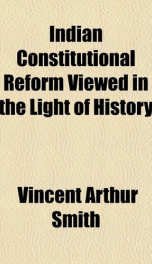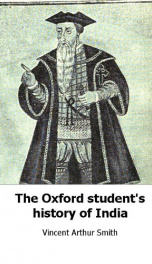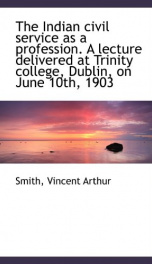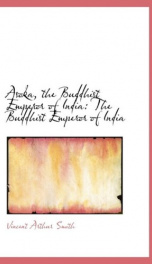indian constitutional reform viewed in the light of history

Purchase of this book includes free trial access to www.million-books.com where you can read more than a million books for free. This is an OCR edition with typos. Excerpt from book: CHAPTER 2 THE HISTOKICAL INDIAN IDEAL OF GOVEENMENT Vedic folk-motes. Popular assemblies, with functions like those of the Homeric agora or the modern Afghan jirga, decided the affairs of the small Indo-Aryan tribes in remote Vedic times, thousands of years ago. When the caste system gradually developed, impairing the unity of the people, and tribal organization was largely replaced by territorial kingdoms, the royal power necessarily increased, and the expression of the public will by general assemblies became impossible. No Indian institution in historical times can be traced back to the Vedic folk-motes. Kingless nations. Long afterwards, at the time of Alexander's invasion in the fourth century B.c., and down to about the fifth century of the Christian era, we hear of sundry peoples or nations in Northern India who enjoyed forms of republican government. Little is 011 record concerning details, but, so far as is known, the republics seem to have been usually under the rule of oligarchies. The Licchavis of Tirhnt, one of the most famous of the republican peoples, almost certainly were Mongolian hill-men akin to the Gurkhas and Tibetans. Perhaps all the kingless nations belonged to the same category. However that may be, all the popular or oligarchical constitutions faded away, without leaving any mark on the general course of Indian history. Statecraft. The theory and practice of government have been favourite subjects with Hindu authors for much morethan two millenniums. The earliest extant treatise, composed in the fourth century B.c., avowedly is based upon a long series of lost works, some of which must have been at least two or three centuries prior in date. Kautilya, the author of the most ancient book known, makes merely a passing allusion to the kingless na...
Info about the book
Author:
Series:
Unknown
ISBN:
9400708866
Rating:
3/5 (2)Your rating:
0/5
Languge:
English
Users who have this book
Users who want this book
What readers are saying
What do you think? Write your own comment on this book!
write a commentGenre
if you like indian constitutional reform viewed in the light of history try:
Do you want to read a book that interests you? It’s EASY!
Create an account and send a request for reading to other users on the Webpage of the book!





